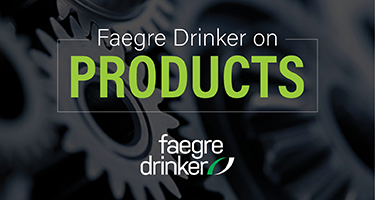A federal court in New York recently granted a motion to dismiss claims that ice cream labeled “vanilla” misleads consumers into believing the product’s flavor comes exclusively from vanilla beans or extract, when in fact other natural flavors contribute to the vanilla taste. The decision may be a harbinger of what is to come in similar cases challenging the label description of vanilla and other flavors in products ranging from ice cream to soy milk to energy drinks. The decision also shows that alleged regulatory violations and product testing do not necessarily support a plausible claim of consumer deception.
The Allegations
In Steele v. Wegmans Food Markets, Inc., No. 19 Civ. 9227, 2020 WL 3975461 (S.D.N.Y. July 14, 2020), the plaintiffs alleged that they were deceived by the labeling of Wegmans private-label ice cream. The label’s primary display panel described the product as “Vanilla” (in large lettering) and “Made with Milk, Cream and Natural Vanilla Flavor” (in smaller lettering). According to the plaintiffs, these descriptions signal to consumers that the ice cream’s vanilla flavor comes exclusively from vanilla beans or vanilla extract. They based that assertion largely on the FDA’s standard of identity for ice cream, which distinguishes between “vanilla,” “vanilla flavored” and “artificially flavored vanilla” ice cream.
The plaintiffs further alleged that Wegmans vanilla ice cream contains a “de minimis” amount of real vanilla and instead is flavored with vanillin derived from other sources. (Vanillin is basically the vanilla flavor molecule.) Results from a gas chromatography–mass spectrometry analysis commissioned by the plaintiffs allegedly showed an absence of vanilla marker compounds in the product.
The Decision
The court granted Wegmans’s motion to dismiss the complaint, concluding as a matter of law that the product label is not deceptive. Analyzing the product label in the sequence a consumer would, the court noted that the large-type “Vanilla” identifies the flavor, other text on the front panel states that the product has natural vanilla flavor, and “[t]hose interested in the actual ingredients can read the [ingredient] list, which mentions neither vanilla beans nor extracts.” Because the statements on the label are admittedly true, and there are no statements on the label about vanilla beans or extract, the court concluded there was no misrepresentation.
The court also rejected the assertion that the product contains a de minimis amount of vanilla. Although the plaintiffs argued that their gas chromatography–mass spectrometry analysis showed there is “too little vanilla bean extract” in the product, the court observed that the analysis could not exclude vanilla extract as an ingredient because the analysis might not have been sensitive enough to detect the marker compounds. As the court explained, “What is needed is to test not for the universe of the ice cream’s contents, but specifically for the presence of the particular chemical markers.” Because the plaintiffs did not do that, their allegations about the quantity of vanilla extract in the product were just “speculation.”
Implications for Other Cases
The Steele decision is significant because it is the first from a series of similar cases filed by the same attorney — who has been dubbed “The Vanilla Vigilante” — over ice cream and seemingly every other product with a vanilla flavor. By rejecting the premise that consumers interpret “vanilla” to mean “vanilla beans or extract,” the Steele decision could mark a turning point in this rash of lawsuits.
More broadly, the Steele decision shows that allegations of regulatory violations and “scientific” testing can be neutralized even on a motion to dismiss. The court recognized that the complaint’s extensive discussion of the FDA regulations was “without consequence” for the plaintiffs’ claims; plaintiffs cannot privately enforce the Food, Drug and Cosmetic Act, and any state-law claims that would not exist but for an FDA regulation are preempted. The plaintiffs’ product testing also missed the mark because it focused on the wrong substance and therefore did not provide a factual basis for the conclusion that the plaintiffs drew. By making the irrelevance or inadequacy of such allegations clear to the court, defendants can sideline potentially damaging allegations and focus attention on the relevant question in consumer fraud cases: whether the challenged practice would deceive a reasonable consumer.
The material contained in this communication is informational, general in nature and does not constitute legal advice. The material contained in this communication should not be relied upon or used without consulting a lawyer to consider your specific circumstances. This communication was published on the date specified and may not include any changes in the topics, laws, rules or regulations covered. Receipt of this communication does not establish an attorney-client relationship. In some jurisdictions, this communication may be considered attorney advertising.

